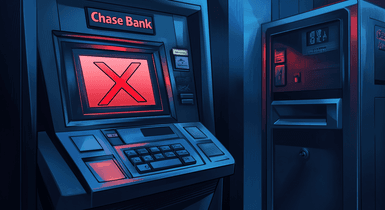Zelle Transaction Limit: Top Bank Transfer Limits Explained

Zelle refuses to send money, no matter what you do? You’ve probably exceeded your bank’s transaction threshold. Every bank has a Zelle maximum transfer limit that determines how much you can send within a day or month.
Check our article to find out how this limit works, which banks offer the most flexibility, what to expect when you hit the cap, and what to do if you still have Zelle funds to send.
Zelle Transfer Limits Overview

As is typical for financial transfer services, your bank’s Zelle limits cover various time periods. Here’s what you can expect:
- Transactional Limits: The maximum amount for a single payment, including fees.
- Daily Limits: The total sum of transactions an account holder can make within a 24-hour period.
- Weekly Limits: The amount of funds an account holder is allowed to transfer per calendar week.
- Monthly Limits: A monthly Zelle limit is no different from the previous ones and governs the total transaction amount per month.
Zelle limits vary significantly by bank and by account type; most banks set lower limits for new/“untenured” accounts and higher limits for tenured or premium ones, while business accounts commonly have different (often higher) limits. In all these cases, banks describe the applicable limits in their Zelle terms or in-app.
Now, let’s discuss the limits set by various US banks.
Zelle Limits by Bank
Practically every financial institution has its own Zelle transaction limit. Meanwhile, some providers do not collaborate with this digital payments network at all. Here’s a breakdown of daily and monthly limits across notable US banks:
Bank | Daily Limit | Monthly Limit | Business Limit |
|---|---|---|---|
Bank of America | $500–3,500 (depending on enrollment tenure) | $20,000 | $15,000 per day, $60,000 per month |
BMO | Varies by account type | Varies by account type | Not listed publicly |
Capital One | $3,000 | Not listed publicly | Not listed publicly |
Chase | $500–10,000 | Not listed publicly | $1,000–15,000 per day (depending on account tier) |
Citibank | $500–5,000 (based on your account’s type and age) | $2,500–20,000 (based on your account’s type and age) | $1,000 per day for accounts opened less than 30 days ago or changed recently $5,000 for older accounts $4,000 for accounts opened less than 30 days ago or with recent changes $40,000 for older accounts |
Discover | $600 | Not listed publicly | Not listed publicly |
First Citizens Bank | $1,000 | $3,500 | $1,500 per day and $5,000 per month |
Navy Federal Credit Union | $1,750–3,000 | $3,000 | Not listed publicly |
Quontic | $500 per transaction, $1,000 per day | Not listed publicly | Not listed publicly |
Truist | $2,000 for most accounts (5,000 USD for Premier customers) | $10,000 for most accounts ($15,000 for Premier customers) | Not listed publicly |
Wells Fargo | $3,500 | $20,000 | $15,000 per day and $60,000 per month |
Ally | $2,000 for instant transfers $5,000 for scheduled transfers (up to 3 business days) | $10,000 | Not listed publicly |
TD Bank | $1,000 for instant transfers | $5,000 for instant transfers $10,000 for scheduled transfers (up to 3 business days) | Not listed publicly |
USAA Federal Savings Bank | $1,000 | $10,000 | Not listed publicly |
Clearly, transfer limits can cause you trouble if you need to regularly deal with large sums. Furthermore, if your bank doesn’t support Zelle, you’ll have to deal with a default weekly limit of $500. Thankfully, there are some viable alternatives.
Zelle Alternatives

If even the highest Zelle limit doesn’t suit your needs, consider exploring alternative P2P payment systems with higher caps and more flexible terms:
- Venmo: Offers higher limits for verified users, but has fewer integrations with partner banks.
- PayPal: Features a wider range of services with fairly high transaction limits, but most transactions are subject to fees.
- Cash App: Has increased transaction limits for authorized users and straightforward account management.
If you’re looking for fewer restrictions and lower fees, take a moment to review the terms of service for major US banks. Be sure to visit the Rates portal, where you’ll find comprehensive guides and reviews of today’s most popular payment platforms.
FAQ
Does Zelle have daily limits?
Yes, Zelle transfers are subject to limits set by your bank (ranging from a few hundred dollars up to several thousand dollars, depending on the bank and account tier). Check your bank’s Zelle terms or its dedicated mobile app for exact numbers.
When do Zelle limits reset?
Zelle limits usually reset every 24 hours or every rolling 30-day period, depending on your bank’s policy. Always check your bank’s specific conditions when planning large transfers.
What if I exceed my Zelle limit?
If you try to send more than your Zelle limit allows, your transaction will be declined or delayed until the limit resets. You can also split the payment into smaller transfers or explore other payment options, such as a wire or ACH transfer.




